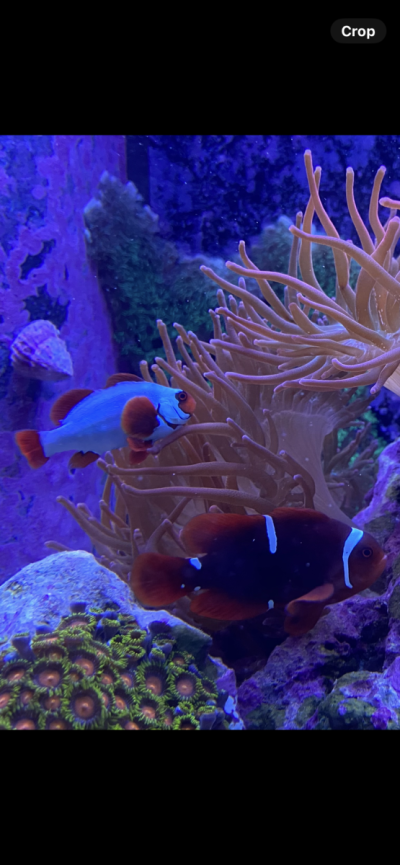Hey everyone,
I have a clownfish pair that just laid their first eggs today (or at least first time I've noticed). I've read a bit about raising the fry, I'm thinking about giving it a try but it also sounds intimidating.
Does anyone have any advice on how to move forward if I decide to try and raise them? I'm unable to easily move the rock from the tank unfortunately.
Also, does anyone know what kind of clownfish my white male is? I know the female is a maroon but I'm not sure about the male. Curious if these 2 can produce viable offspring and whether they'd be a desirable hybrid or not.
Thanks!



I have a clownfish pair that just laid their first eggs today (or at least first time I've noticed). I've read a bit about raising the fry, I'm thinking about giving it a try but it also sounds intimidating.
Does anyone have any advice on how to move forward if I decide to try and raise them? I'm unable to easily move the rock from the tank unfortunately.
Also, does anyone know what kind of clownfish my white male is? I know the female is a maroon but I'm not sure about the male. Curious if these 2 can produce viable offspring and whether they'd be a desirable hybrid or not.
Thanks!

























